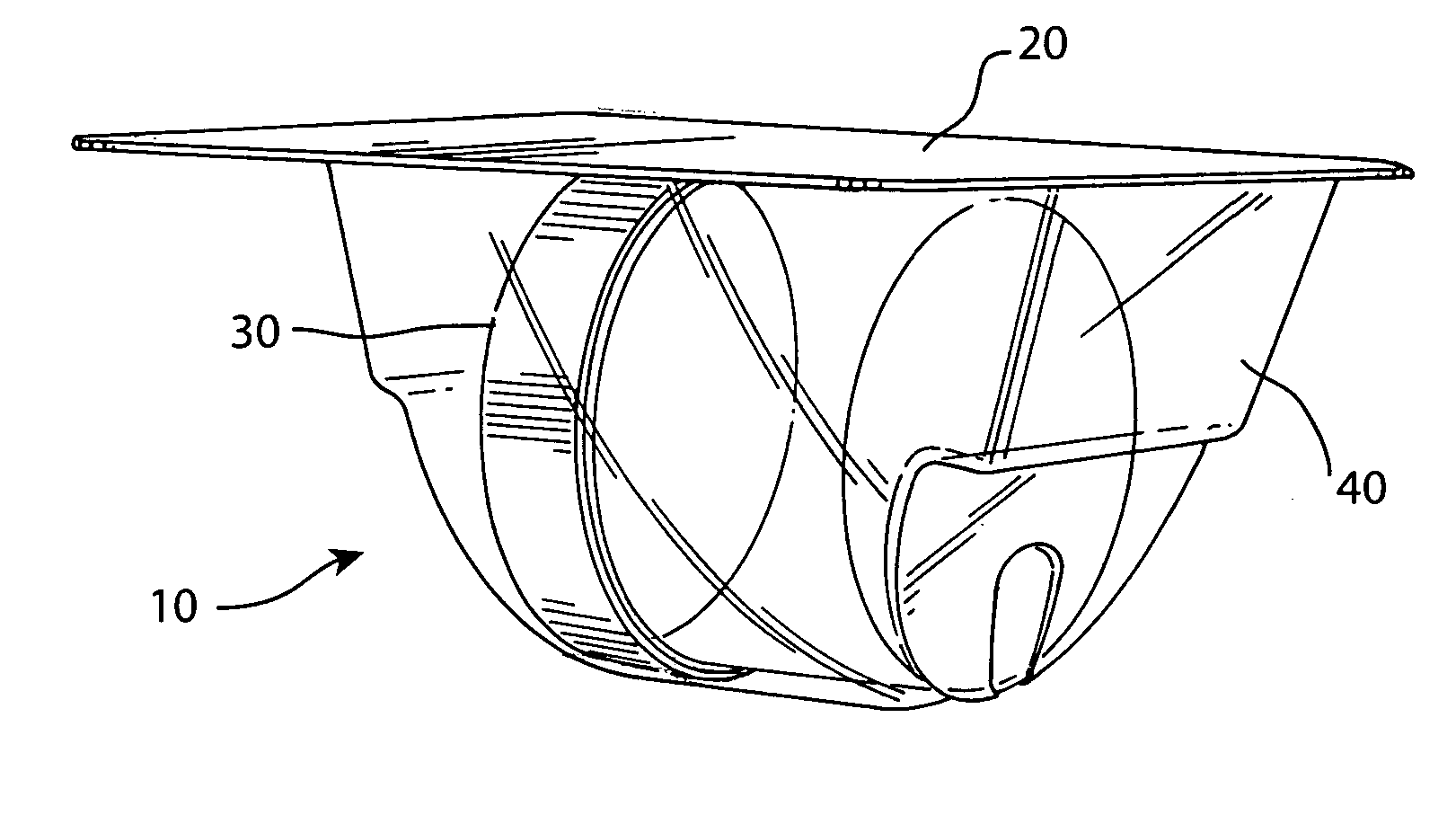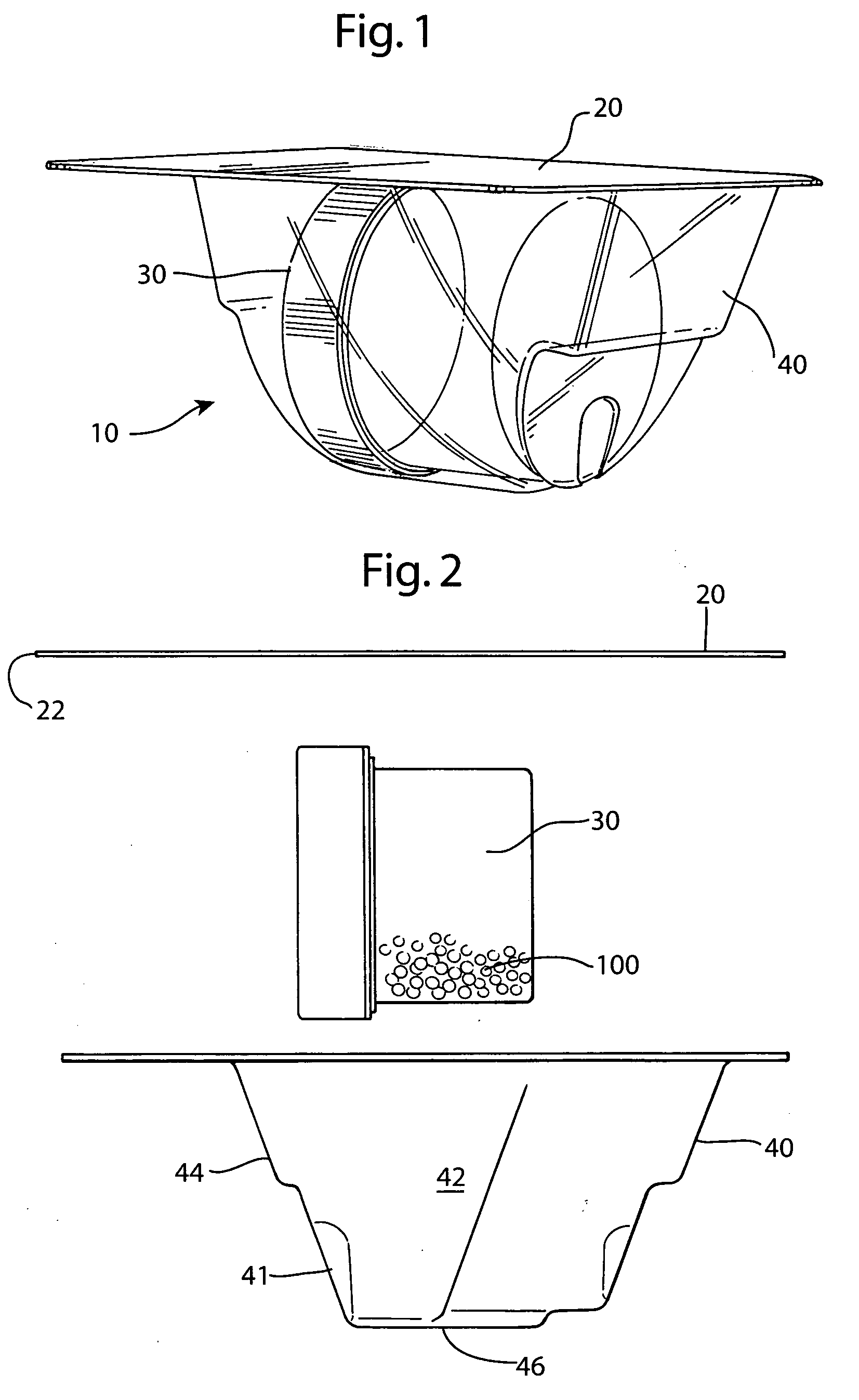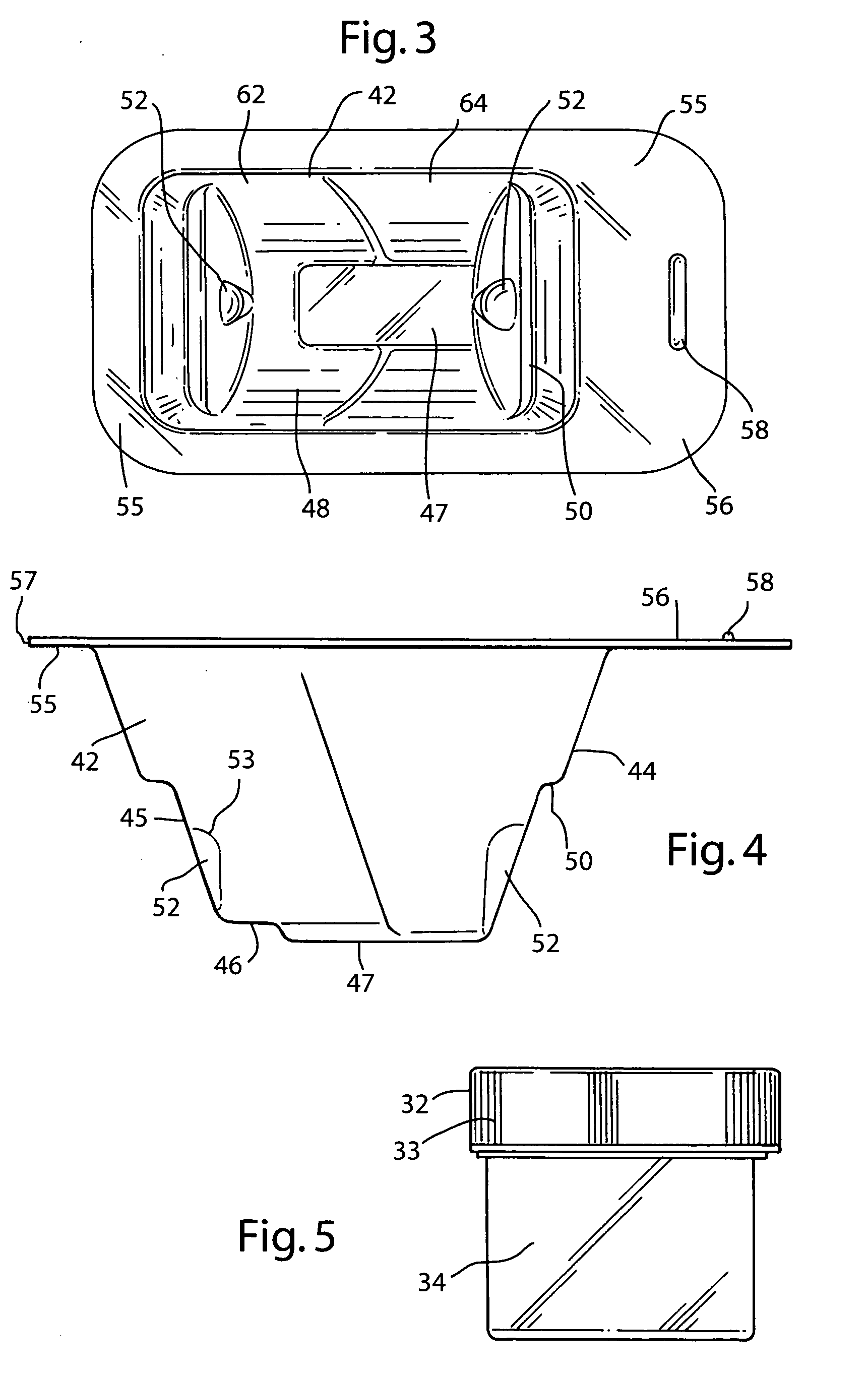Container for lyophilization and storage of tissue
a tissue and container technology, applied in the field of tissue container for lyophilization and storage of tissue, can solve the problems of cumbersome packaging of bone implant forms, difficult to easily remove the implant form from such packaging, and little consideration has been spent on packaging design and specific problems involved in packaging bone tissue materials
- Summary
- Abstract
- Description
- Claims
- Application Information
AI Technical Summary
Benefits of technology
Problems solved by technology
Method used
Image
Examples
Embodiment Construction
[0037] The preferred embodiment and best mode of the tissue form package invention is shown in FIGS. 1-10. The tissue package 10 comprises a blister pack 40 which holds a cylindrical container or jar 30, the blister pack outer flange 55 being covered with a cover 20. In the preferred embodiment of the present invention thin, plastic material is used that is sterilizable and can be formed by any suitable method such as for example, injection molding, pressure molding, vacuum forming and the like. The component material used for the blister pack of the allograft bone tissue package assembly 10 is preferably made in the form of a laminate made of an available material such as polytheylene terephthalateglycol (PETG) (a copolyester made by Eastman Chemical) as the inside layer, with the outside layer being another available material polycholrotrifluoroethylene (PCTFE) under the trademark ACLAR (a fluorinated-chlorinated thermoplastic made by Allied Corporation) which is impermeable to ox...
PUM
 Login to View More
Login to View More Abstract
Description
Claims
Application Information
 Login to View More
Login to View More - R&D
- Intellectual Property
- Life Sciences
- Materials
- Tech Scout
- Unparalleled Data Quality
- Higher Quality Content
- 60% Fewer Hallucinations
Browse by: Latest US Patents, China's latest patents, Technical Efficacy Thesaurus, Application Domain, Technology Topic, Popular Technical Reports.
© 2025 PatSnap. All rights reserved.Legal|Privacy policy|Modern Slavery Act Transparency Statement|Sitemap|About US| Contact US: help@patsnap.com



